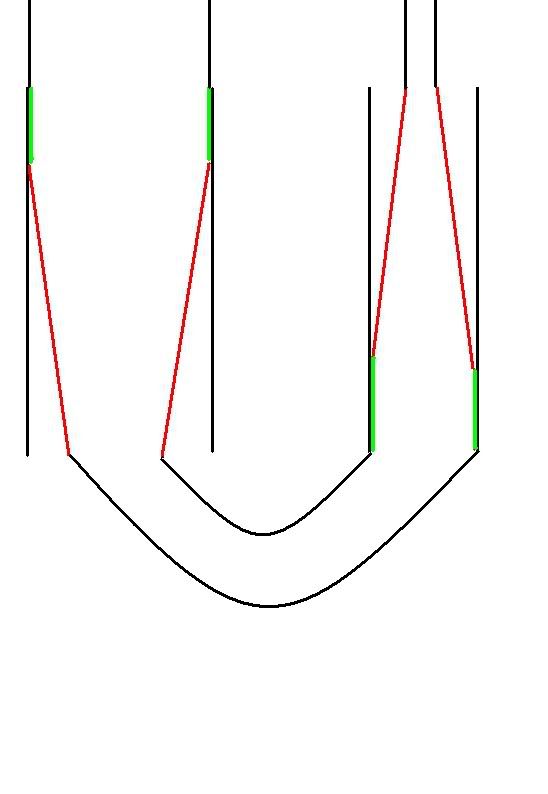Page 1 of 1
Conical Tuning Slide?
Posted: Tue Jun 09, 2009 4:13 pm
by Tubaing
Why don't we see conical tuning slides legs on tubas? I had the idea (did anyone else???) of the inner slide leg being conical for for a few inches and have the last inch or so being cylindrical for the contact with the outer sleeve.
(See crude picture below)

It'd be logical (at least to me) that this would be done on CC conversions.
Re: Conical Tuning Slide?
Posted: Tue Jun 09, 2009 4:39 pm
by windshieldbug
Been done. Courturier tried that with his "Continuous Conical Bore" patent, with which he built a full line of brass instruments (including trombones... ). Didn't prove to be worth the trouble.
You can reduce the amount, but you have SOME cylindrical tubing, anyway.
Patent number:
1073593
Filing date: Sep 3, 1912
Issue date: Sep 23, 1913
Inventor: ERNST ALBERT COUTURIER
Re: Conical Tuning Slide?
Posted: Tue Jun 09, 2009 8:10 pm
by J.c. Sherman
I hate it when that happens; the same thought occured to me until I disassembled an Edwards Bass Bone tuning slide - voila!
J.c.
Re: Conical Tuning Slide?
Posted: Tue Jun 09, 2009 11:43 pm
by Art Hovey
I made something like the one in your diagram for one of my projects some years ago.
It's not hard to fabricate, but it is more fragile than a conventional setup. If a kid mistook the slide for a handle he would probably yank it out of alignment instead of just pulling it out.
I do put a reverse sleeve on the small side of the main tuning slide of all of my frankentubas, (like most trombone tuning slides) but I don't find it worth the trouble to taper the inner tubing as in your diagram.
Re: Conical Tuning Slide?
Posted: Thu Jun 11, 2009 1:40 pm
by iiipopes
Yep. My Besson has a thicker wall to the valve block side of the main tuning slide, and a thinner wall to the bugle side, effectively making it "conical."
Trumpets have been done like this for decades. It's what makes a Bach "Vindabona" and a King "Dual Bore" do what they do: thicker wall and therefore lesser internal diameter bore at the leadpipe end and thinner wall and therefore greater internal diameter at the valve block end on a trumpet.

